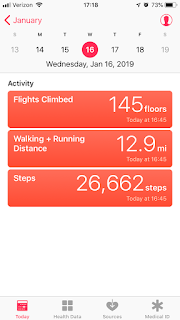The value of contingency days
For much of my passive seismic deployment career, I've worked on networks that you can drive to from my institution. In 2016, I deployed an aftershock array in Ecuador with the University of Arizona, Lehigh University, and the Geophysical Institute in Quito and one of the key lessons I learned was to add an extra day just in case things go wrong. If you need to, you can spend more time in the field. If not needed, you can explore the field area. Well, for this Mojave service run I decided to ignore the contingency day and just schedule the days I thought we needed so the students could get back to class. However, they were amazing in the field and we finished all 19 stations a day early. So, given the extra day available to work and 2 stations with GPS cables that had met the wrong side of critter teeth, we decided to use our extra day to install some protection for the GPS cables on as many sites as we could. Installing this protection, in the form of $0.25 pool noodles, took about 5 minutes per station so we were able to hit 13 stations (5 by one team and 8 by the other). Not too shabby of a day's work, if I do say so myself. We don't know how well these will work, but when I get back to UT we'll design and test something more permanent with our techs.
The definite highlight of the day for Simone and myself was spotting a desert tortoise on the way back from MOJS and MOJR. The little fella was just hanging out near the road so we stopped to make sure he didn't dash in front of our truck and in the meanwhile, we took a few photos. The Mojave desert tortoises are a threatened species out here and one of the key informational packets that the BLM sent me was tips for identifying tortoise habitats. It was absolutely amazing seeing the tortoise in the wild.
I'm sorry I can only show so few photos. The students have taken some amazing photos that I've been happy to share, but there's only so many that seem reasonable in this blog format. Hopefully the students will make their own blog posts highlighting their favorite photos from the trip.
Tomorrow we head back to Los Angeles and then home to Austin. It'll be sad leaving the desert, but we've got a ton of data and I'm ready to be home. I'm eternally grateful to the Southern California Earthquake Center for funding this, the PIs for including me, UT for the great work environment, the Bureau of Land Management Needles Field Office for allowing us the use of public wilderness land, and the Mojave National Preserve for allowing us to put a station on their land.
The definite highlight of the day for Simone and myself was spotting a desert tortoise on the way back from MOJS and MOJR. The little fella was just hanging out near the road so we stopped to make sure he didn't dash in front of our truck and in the meanwhile, we took a few photos. The Mojave desert tortoises are a threatened species out here and one of the key informational packets that the BLM sent me was tips for identifying tortoise habitats. It was absolutely amazing seeing the tortoise in the wild.
I'm sorry I can only show so few photos. The students have taken some amazing photos that I've been happy to share, but there's only so many that seem reasonable in this blog format. Hopefully the students will make their own blog posts highlighting their favorite photos from the trip.
Tomorrow we head back to Los Angeles and then home to Austin. It'll be sad leaving the desert, but we've got a ton of data and I'm ready to be home. I'm eternally grateful to the Southern California Earthquake Center for funding this, the PIs for including me, UT for the great work environment, the Bureau of Land Management Needles Field Office for allowing us the use of public wilderness land, and the Mojave National Preserve for allowing us to put a station on their land.
Our tortoise friend near Budweiser Springs
Myself (left) and Simone (right) at a station after the pool noodle was added to protect the cable.
Another short of the desert tortoise
Myself and Simone with our truck, Becky. She did fantastic.
Looking at Old Dad Mountains. Photo: Brandon Shuck
Looking at Old Dad Mountains. Photo: Brandon Shuck
Rob with my head in the hole working on swapping out a bad sensor cable. Photo: Brandon Shuck
A sensor cable that had a bad day with a critter. Photo: Brandon Shuck
Looking from MOJR to MOJQ. We climbed the mountain on the left. Photo: Brandon Shuck
Photo: Brandon Shuck
Brandon at MOJS
Photo: Brandon Shuck















Comments
Post a Comment